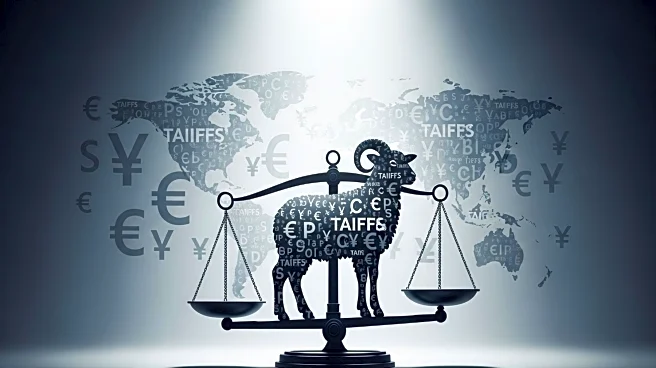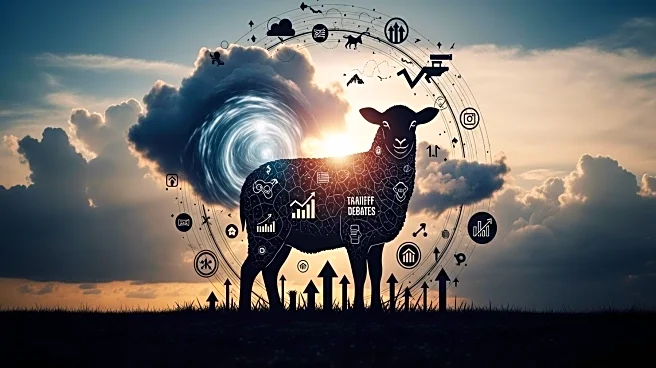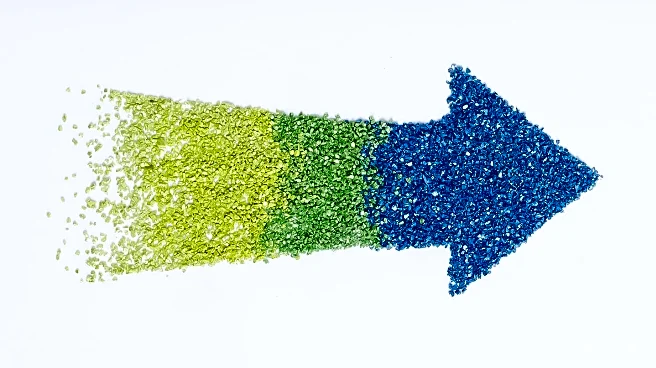Rapid Read • 8 min read
The U.S. lamb industry is currently grappling with issues related to tariffs and trade, which have been a significant topic across the agricultural sector. The industry, although smaller compared to other agricultural sectors, has seen growth in certain regions, particularly in the South with the introduction of hair sheep breeds. Historically, lamb imports have been a contentious issue, with significant surges in the early 1990s prompting investigations by the U.S. International Trade Commission into unfair trading practices by Australia and New Zealand. Despite these investigations, tariffs were not imposed, leading to a continued decline in domestic production. By 2006, imports surpassed domestic production, and as of 2024, imports accounted for approximately 70% of the total lamb and mutton supplies in the U.S. market.
AD
The ongoing debate over tariffs in the lamb industry highlights broader concerns about the sustainability and competitiveness of domestic agricultural production in the face of rising imports. The reliance on imports for a significant portion of lamb and mutton supplies raises questions about the long-term viability of U.S. producers and the potential need for protective measures. This situation impacts not only producers but also consumers, as it influences market prices and availability. The industry's challenges reflect wider issues in U.S. agriculture, where trade policies and international competition play crucial roles in shaping market dynamics and economic outcomes.
The future of the U.S. lamb industry may involve further discussions on trade policies and potential tariff implementations to protect domestic producers. Stakeholders, including industry leaders and policymakers, might explore strategies to enhance competitiveness and reduce dependency on imports. These discussions could lead to policy changes aimed at supporting domestic production and ensuring a stable supply chain. Additionally, there may be increased focus on innovation and diversification within the industry to adapt to changing market conditions and consumer preferences.
The lamb industry's situation underscores the ethical and economic considerations of trade policies, particularly in balancing domestic interests with international trade obligations. The debate over tariffs involves complex legal and economic dimensions, as stakeholders navigate the implications of protectionism versus free trade. Long-term shifts in consumer demand and agricultural practices could also influence the industry's trajectory, prompting a reevaluation of production methods and market strategies.
AD
More Stories You Might Enjoy











